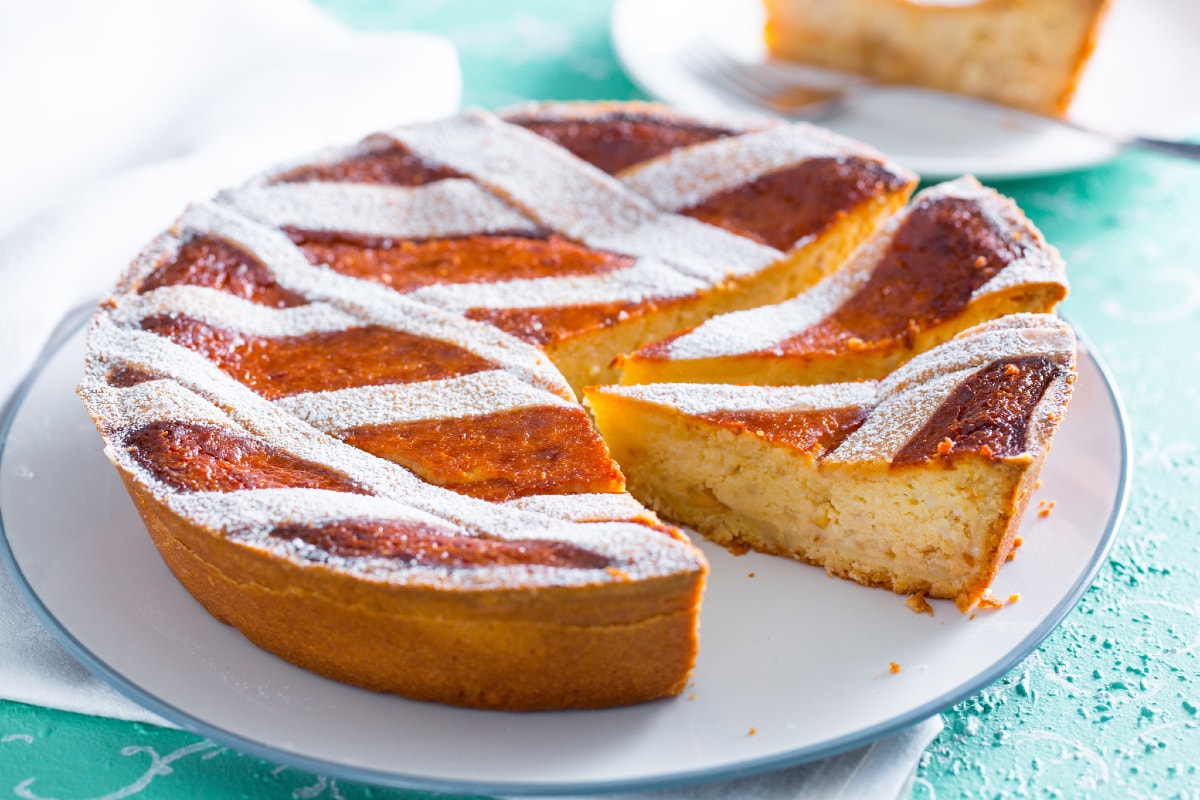Quick Easter Colomba cake
- Average
- 1 h 50 min

At Easter, in particular on Holy Thursday before Easter, in Neapolitan kitchens there is the traditional preparation of the Neapolitan pastiera. It is a genuine ritual made up of gestures and secrets that are handed down from one generation to the next. Each family has its own way of preparing the perfect dough, of flavoring the filling with wheat cream and ricotta cheese (either with sheep’s milk or sheep’s and cow’s milk), and of deciding the thickness and number of decorative strips. We invite you to discover the recipe of pastry chef Stefano Avellano from the historic Gran Caffè Gambrinus of Naples. You will enjoy its incredible taste and aromas, an explosion of flavors... pure poetry. Behind this one-of-a-kind dessert, which is the pride of Naples and indeed of a whole territory, are many hidden legends and historical curiosities. Remember to be patient when preparing this typical Easter cake, because the more your Neapolitan pastiera rests, the better it will taste!
Happy Easter everyone!!
Check out also these traditional Easter recipes:
If you liked this Neapolitan recipe, do not forget to check the one for the traditional babà!

To prepare the pastiera, start by preparing the shortcrust pastry dough. On a work surface, sift the flour 1 and add a pinch of salt 2 to form a volcano, making sure you can see the work surface underneath in the center 3.

In the center add butter, lard 4, and sugar 5. Mix these 3 ingredients well by hand 6.

Continue to mix and add the honey 7, egg, milk 8, and citrus peels 9.

Continue to mix the ingredients in the center of the flour 10 until you obtain a kind of soft batter 11. Then begin to add the flour slowly 12 and mix with the help of a dough scraper if needed.

Shape the dough into a ball 13. To make it more homogeneous, you can lightly dust the work surface with a little flour. Then continue to knead the dough to make it completely smooth and homogeneous 14. Cover it with plastic wrap and let it rest in the refrigerator for 1 hour 15.

While the dough is resting, prepare the wheat cream. Pour the precooked wheat in a pan and add a pinch of salt 16. Mash the wheat a little to make it uniform and pour in the milk 17 and add the butter 18.

You can also add a piece of orange and lemon peel 19. Bring it to the verge of boiling which will take just a few minutes. Use a fork to mash the wheat as it cooks and continue to stir 20. Once it is about to boil, turn off the heat and transfer the wheat mixture to a low and wide pan to cool 21.

In a separate bowl, add the drained ricotta 22 cheese and the sugar 23. Stir until you obtain a soft cream and then let it rest in the refrigerator for about an hour 24.

After the time has elapsed, take out the cold wheat mixture from the refrigerator, remove the citrus peels 25 and place the wheat mixture in a large bowl. Add the diced candied citron 26 and stir briefly. At this point, if you want, you can use a hand blender for a few seconds to obtain a mixture with a less rustic consistency 27.

Take the bowl with the ricotta cheese and sugar, add the honey 28, stir, and add the wheat mixture, stirring constantly to combine the ingredients 29. In another bowl, add the eggs, yolk, and orange blossom water 30.

Then add the milk 31, zest a little bit of lemon and orange 32, and mix everything well 33.

Add this mixture to the ricotta cheese and wheat cream in two or three parts and continue to mix. The filling is now ready 34. Take the dough out of the refrigerator and divide it into two parts, one larger than the other 35. Roll out the larger part on a work surface with a rolling pin, making sure they are both lightly floured 36, until you obtain a thickness of 1/8 inch (3 mm). Then roll the dough around the rolling pin.

Unroll it over an 8-inch (20 cm) flared pastiera cake mold (no need to grease and flour) 37. Let it adhere well to the bottom and sides, then remove the excess dough by passing the rolling pin over the edges 38. Trim with a small knife 39 and prick the base with a fork.

Place the filling inside, gently beat the mold on the work surface to eliminate any air bubbles 40. Roll out the remaining dough and make seven ½-inch (1-2 cm) 41 thick strips. Place the first 4 strips over the filling reaching over the edge of the pastiera mold in a diagonal direction. Then add on top of the 4 strips the other 3, again reaching over the edges, to create a grid pattern. Then eliminate the excess dough 42. The pastiera is now ready to be baked in a preheated static oven at 360° F (180° C) for about 50-55 minutes on the lowest rack.

Then take the Neapolitan pastiera out of the oven 43 and when it has completely cooled you can either remove it from the mold or serve the cake directly in it 44. Sprinkle a little powdered sugar just before serving and enjoy 45!